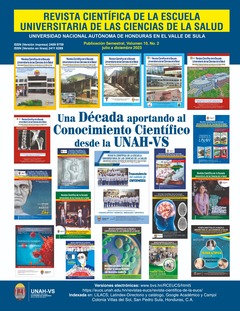Difficult airway management in a patient with a giant neck mass: Case report
DOI:
https://doi.org/10.5377/rceucs.v10i1.18055Keywords:
dexmedetomidine, intubation, ketamine, laryngoscopy, airway managementAbstract
In order to diagnose and provide timely and safe management, the American Society of Anesthesiologists (ASA) defines a difficult airway as the clinical situation in which a physician trained in anesthetic care experiences anticipated or unanticipated difficulty or failure, including one or more of the following: face mask ventilation, laryngoscopy, supraglottic airway ventilation, tracheal intubation, extubation, or invasive airway. Difficult airway management continues to be a challenge, even for experts in its management, and even more so if it is performed in poorly controlled places (outside the operating room or emergency room). The objective of this work is to present a safe option in the approach of the patient who depicts a difficult airway. We present the case of a male patient, 73 years old, who came to the emergency room due to respiratory difficulty secondary to partial obstruction of the airway due to a giant mass in the neck, who underwent video-assisted vigil tracheal intubation with sedation (ketamine and dexmedetomidine). The patient with a large part of his airway invaded by the mass, is preoxygenated through a bag-mask device prior to orotracheal intubation, maintaining spontaneous ventilation, associated with monitored sedation; thus avoiding a fateful event such as airway collapse. Conclusion: Video-assisted vigil tracheal intubation under sedation with ketamine and dexmedetomidine is a safe option in approaching a difficult airway.
Downloads
487




